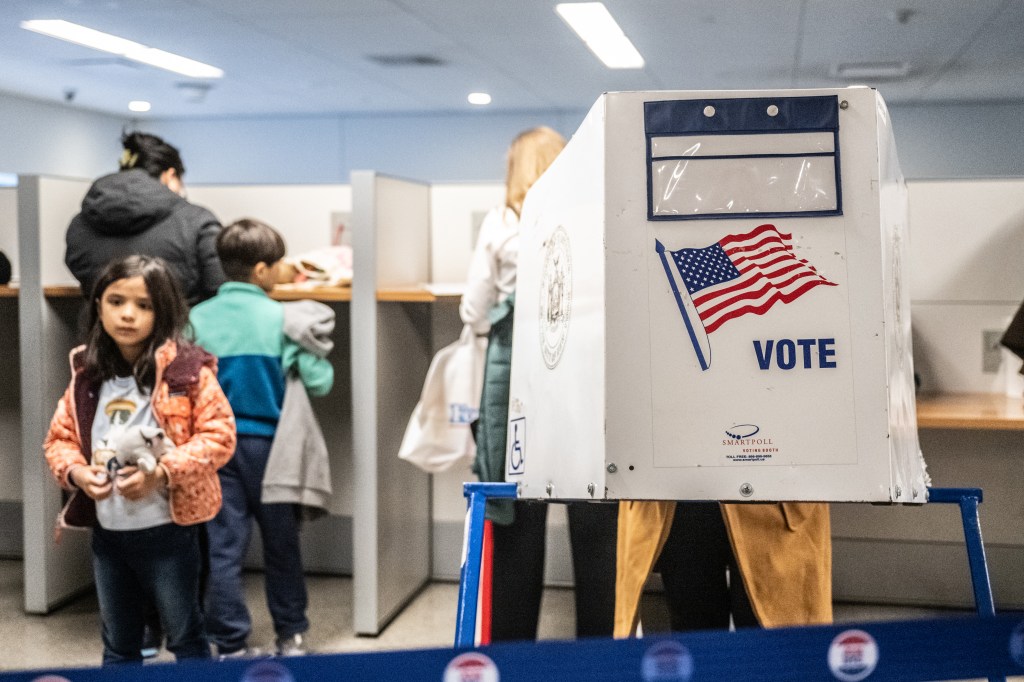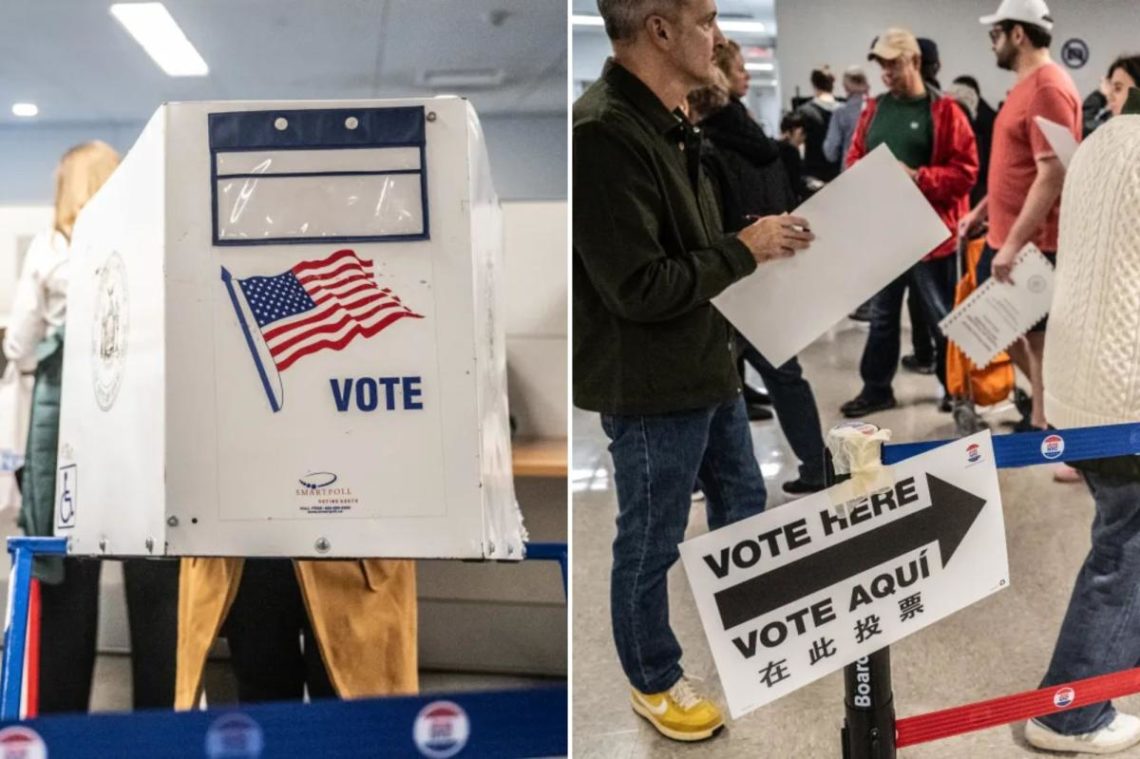Candidates aren’t the only ones on the ballot as the Big Apple gears up for Election Day.
New Yorkers will have the chance to check the box on six ballot initiatives Tuesday — one at the state level and five citywide — which could drastically change the current methods by which affordable housing is approved.
The proposals — written by the city’s charter commission with public input — have been a tug of war between the City Council and Mayor Eric Adams, with many of the changes looking to restrict the council’s land use and rezoning powers.

Councilmembers have slammed the measures as “misleading,” while proponents say they are necessary to address the city’s housing crisis.
So what’s exactly on the ballot? Here’s a breakdown of each measure.
Ballot Measure No. 1 : Amendment to Allow Olympic Sports Complex In Essex County on State Forest Preserve Land
This statewide proposal is a retroactive measure to uphold state law for an Olympic sports complex near Lake Placid which has already been built and used in two Olympic Games — one in 1932 and one in 1980.
The winter sports metropolis is built on over 1,000 acres of State Forest Preserve Intensive Use Land. The proposed amendments would allow the Olympic Regional Development Authority — a state organization — to continue to legally use and improve the land, which has already been utilized (technically illegally) for over 45 years.
A yes vote would also include the expansion of ski trails in upstate New York and would require the state to add 2,500 acres to the forest preserve.

Ballot Measure No. 2: Fast Track Affordable Housing to Build More Affordable Housing Across the City
Affordable housing would be fast-tracked by forgoing the traditional seven-month process known as the Universal Land Use Review Process (ULURP) under this proposal.
A yes vote would establish two new processes — both of which bypass the City Council — which currently oversees the land use review.
The first process would give the Board of Standards and Appeals (BSA) power to approve publicly funded housing after a 60-day review by the neighborhood’s local community board and a 30-day review by the BSA.
The second process would apply to any affordable housing projects proposed in the city’s 12 community districts with the least amount of current affordable housing. It would consist of a 60-day review by the local community board and borough president — followed by a 30- to 45-day review by the City Planning Commission (CPC) — which would get final approval. The CPC consists of 13 members — the mayor appoints the chairperson along with six members — while each borough president appoints one. The public advocate also appoints a member.
A no vote would keep the ULURP as is — giving final voting power to the mayor and the city council.
Ballot Measure No. 3: Simplify review of modest housing and infrastructure projects
This would create an Expedited Land Use Review Process (ELURP) for smaller projects that would remove final review from the hands of the council — in most cases.
It would assist in rezoning buildings up to 45 feet tall (about 4 stories) in low-density districts and would allow developers to build 30% more housing in medium- to high-density areas.
Follow the latest on the 2025 New York City mayoral election:
- Trump tells New York ‘you must vote’ for Andrew Cuomo over Zohran Mamdani in NYC election — and ditch Curtis Sliwa
- Andrew Cuomo would beat Zohran Mamdani in head-to-head race for NYC mayor: bombshell poll
- How Zohran Mamdani’s aloof wife, Rama Duwaji, quietly steered his campaign from behind the scenes
- Zohran Mamdani spews word-salad excuse after Barack Obama endorsement snub just one day before election
The ELURP would include a 60-day review process by the community board and borough president, followed by a 30-day review and final decision by the City Planning Commission.
Ballot Measure No. 4: Establish an Affordable Housing Appeals Board with Council, Borough, and Citywide Representation
New Yorkers will be asked to decide whether to establish an appeals board that could reverse affordable housing decisions made by the City Council.
The board would consist of the council speaker, the local borough president and the mayor. Under the current ULURP, the council gets the final vote, which can be vetoed by the mayor — but then overruled by the council.
This appeals board would be given a final say — and could overturn a council override with a 2-to-1 vote.
Ballot Measure No. 5: Create a Digital City Map to Modernize City Operations
Surprisingly, New York City does not have a unified map that defines the boundaries of streets, neighborhoods and parks. Instead, each borough controls its own official map, and there are currently 8,000 city paper maps that piece together the Big Apple.
This measure would put the Department of City Planning at the helm of creating a citywide map by January 2028 and a digital map by January 2029.
Ballot Measure No. 6: Move Local Elections to Presidential Election Years to Increase Voter Participation
To increase voter turnout, this would move the city’s local elections to presidential election years.
While this year’s mayor’s race has churned out historic early voting numbers — there have traditionally been major discrepancies in turnout for off-year elections.
In 2021, only about 23% of New Yorkers came out to vote for their local races — while over 60% voted in the 2024 presidential contest.
The City Council has not taken a position on this measure proposed by the charter commission.
The post NYC voters will be faced with 6 ballot measures on Election Day — here’s what you need to know appeared first on New York Post.




